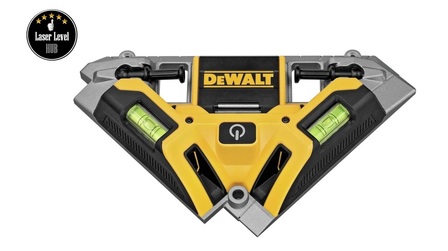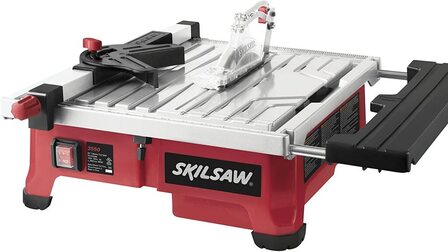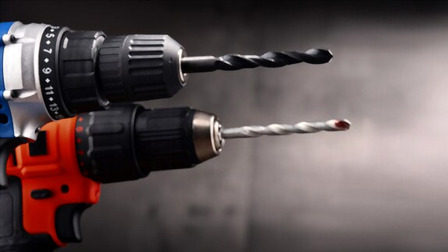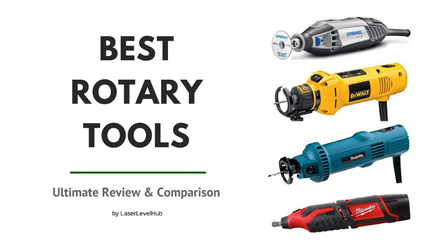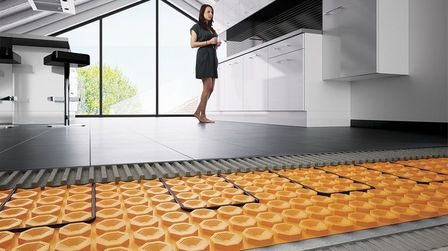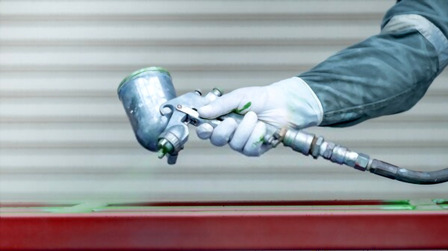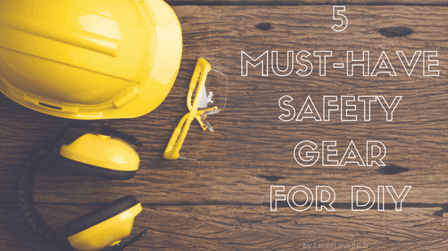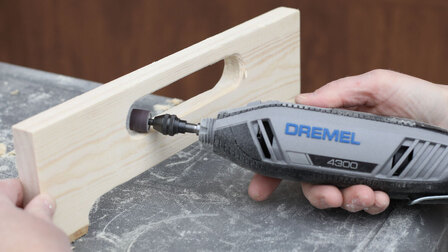Sometimes the hardest thing to do is to find a product that is not just best in theory but also ideal for your own needs. The same goes for when you want to choose the best rotary hammer drill.
What type is best for you? How many types are there? Which brand is most reliable? What brand follows ‘Make in America’? What about attachments? And customer support? Maybe a budget hammer drill for the DIY in you? Where should you even start?

All these burning questions answered in this breezy post on how to choose the best rotary hammer drill for your needs. For most people, this guide will be enough before they go online and buy the tool.
Let’s start with some basic information on rotary hammer types…. Re
Types of Rotary Hammer Drills
In a previous article you came across three different types of rotary hammers: corded, cordless, and dedicated. Here, let’s go through a few more niche types.
Basic Rotary Hammer – This is the standard rotary hammer drill that uses a hammering action to bore through hard materials. The combination of rotary drilling and hammering breaks up the surface and enables drilling
Demolition Hammer – This is used to chip or break hard materials like rock and concrete as opposed to drilling holes in them. The two main specialties in this type are:
- They have more power to dispense and less speed
- Drill bits are usually spade-like tools like chisel

Combination Hammer – As the name suggests, it is a dual-mode hammer that can be used to both drill holes in and break up hard materials. Usually equipped with a switch to transition between the two modes.
Please note that most types are available in both corded and cordless design.
Different Bit and Tool Interfaces
One of the most important parts of a hammer drill is the bit interface. While carbide masonry bits are essential for proper drilling, the interface that holds it also matters.
The secret of having an ideal hammer for your requirements is to take a good, detailed look at this interface. Especially when there are so many types available in the market.
There are primarily five different types of bit-holding systems, also known as chucks and tool interfaces, as listed below:
- Standard keyed chuck – The traditional tool interface where you use an Allen key (hex key/wrench) to tighten the bit. Although time-consuming, it is known for a stronghold
- Standard keyless chuck – Needs just a simple twist to fit and remove bits. Widely preferred over keyed chucks
- SDS+ – A simple mechanism with a keyless quick-release chuck that allows for seamless operation. This is the most common interface on the market, first developed by Bosch
- SDS Max – Similar to SDS+ but suitable for heavy masonry work
- Spline – A popular bit-holding system with 12 teeth cavity connected to the drill motor. It used to be the most widely used chuck in the early 2000s.

If you are an advanced user, you already know the basic differences between them.
While most chucks will get the job done, if you are looking for efficiency, target the system that gives precision and convenience. Bosch and other manufacturers recommend SDS bits.
SDS+ and SDS Max are highly recommended, but be aware that those two are not compatible with each other. SDS Max – the advanced version – is backward incompatible with SDS+.
Further, according to Bosch, each chuck system works best when they are in their ideal range. It states the following ranges are ideal:
- 3/16" – 3/4" for SDS+
- 1/2" – 1-3/4" for SDS Max
- 3/8" – 1-3/8" for Spline and standard chucks
In addition to these ranges, it is also recommended that you choose a rotary hammer that is one level above the type and size of holes that you need.
Most manufacturers provide enough warranty (even up to 25 years) that are often outlived by the models by years and even decades, but pushing any tool beyond its highest capacity can take a toll on its longevity as well as operation.
To avoid wear and tear, buy the next larger version for your needs so that most of your jobs are done without the rotary hammer going full strength.
More such information and tips can be found in this guide below. A list of all the factors that you need to consider before going shopping on Amazon.
How to Choose the Best Rotary Hammer Drill for Your Needs?
An easy step-by-step guide to making your buying journey easier and convenient, and to avoid mistakes:
Questions to Ask Before Buying
Find answers to these three questions and keep them ready before going to the next step. These will help you assess your ideal requirements.
- What do you intend to do with your rotary hammer primarily?
Understand what specific tasks that you intend to do with a rotary hammer, how frequently will you use it, and what is the driving force behind this need to buy one.

If you are an engineer, how did the need for it pop up now?
Is it because of a single project after which you may not need it? Answer these questions and create your own profile.
- What is your profession/vocation?
Are you a do-it-yourselfer, a professional, or a serviceman who intends to use it daily? What about frequency? What features are deal-breakers? Are you looking for an entry-level model?
- Will you use it one year from now?
A rotary hammer is a huge investment not just because of its price. It is a heavy power tool that will take up some good space in your kit.
So, there is a need to understand if you will use it for a few weeks and then stash it in the garage shelf eating dust.
If the answer to the third question is yes, you can move forward to our parameters list. Here goes…
Factors to Consider
A list of important factors to consider and measure against your specific needs:
Power Source
This is often the first point you should consider and then move on to other factors. Go with a cordless rotary hammer if you travel around a lot and work in sites without ample power supply points.
Modern tools by Makita and DeWALT have very strong batteries (with spares included in the original kit) that can run for hours on a single charge. In comparison, corded models give out more power and are preferable for heavy work like demolition and tile chipping
- If you buy a cordless model, make sure you get an extra set of batteries always handy
- Cordless models do not have chiseling mode
Chucks and Drill Bits
As discussed above, choose the chuck system that is best for your specific requirements. SDS+ and SDS Max are recommended, and most modern tools come with them

Hole Size
One another sub-factor to consider is hole sizes. Check if the rotary hammer drill of your choice can take large drill bits that are critical for your specific projects
Mode
Some models have multiple modes like hammer drilling, regular drilling, chiseling, demolition, and screw driving. Check these modes before purchasing and opt for a single-mode drill if you already have other types
Power and Torque
Check the motor specifications to see if it has enough mojo to break down the hard materials in your projects. Torque is equally important as it influences the rotational speed, which in turn has an effect on the boring ability
Speed
While low speeds do not necessarily affect work, higher speeds are required if you are handling heavy-duty work like drilling through concrete slabs or demolishing stone structures
- Look out for variable speed triggers and multiple speed modes to gain control of the speed of your tool
Built
The body of a rotary hammer is as important as the insides. Rust-resistant metal plus fiber enclosures are preferred because they tend to have longer lifespans
Hammer Type
There are two types of hammer drilling – using a piston and using discs to create the hammering motion. Piston-driven rotary hammers are preferred because of their higher power and longevity
Some optional factors to consider. These are not critical but will depend on your exact needs:
- Extra Features – Some modern tools have extra features that make them stand apart from competitors
- LED light – Essential feature for when working in dark areas. Bright LED lights with time delays are preferred so you don’t have to keep pressing an extra button (other than the trigger) and the light stays on for some part of the drilling activity before you have to press again
- Depth rod – Instead of using tape, you can buy a depth rod to measure the length of the hole to be bored. This is precision engineering and suitable for professional workers who use rotary hammers daily
- Bluetooth and Smartphone Connectivity – If you want to operate and manage a tool remotely. Good for contractors who have multiple power tools used by their workers in different locations in a single site
- Case – Optional, but very useful if you move around a lot
- Brands – Please see the next section
- Accessories – This is important for professionals. Drill attachments like chisels, spades, and other demolition-specific bits are common and must be considered for that extra strength and precision. Extra batteries, chargers, and safety equipment are also critical. A side handle is also a must if you handle heavy projects because the right way to handle a hammer tool is with both hands
- Cost – The essential final component in any purchase. Although a higher price sometimes means advanced products, our buying guide here will help you choose the one that fits your needs best. Keep a budget in mind before looking for choices and then make wise purchases.
Now that you have a pretty good idea about what you need and what you need to look to find the best rotary hammer drill for your needs, it is time to go through a list of the top tools.
You can check our existing guide to see which ones are the best in the market here.
Alternatively, have a look at different brands that are active today. We will briefly talk about the top 6 manufacturers of hammer drills.
Top Rotary Hammer Drill Brands
Bosch
One of the Big Three along with Makita and DeWALT, this German engineering company is known for its design and pioneering technology.
It has been around since 1886 and over the decades has contributed to revolutionizing the power tools industry. Bosch’s tools are highly reliable and power efficient.

Makita
This Japanese company has been around for more than 100 years now.
It provides cutting-edge technology in its tools and is known for special features that you will not find anywhere else. If you do, you know it first came in a Makita tool.

DeWALT
Slightly younger than Makita, it celebrates the ‘Make in America’ sentiment and is known for affordable and quality tools.
American engineers and technicians are loyal to DeWALT and there’s a reason for that.

Milwaukee
It is known for its ergonomic design, precision, and a wide range of tools. It is an American mega-company with its own research field that churns out new features with every other product release.
Hilti
Hilti grew in prominence during the Second World War and since then has been producing some of the finest power and manufacturing tools.
It is also known for its research-based manufacturing process.

Ryobi
The green-colored ubiquitous tools that you see around are by Ryobi. Their tools have insane power capacity.
So if you are looking for high power, go with Ryobi first.
Although all brands are competitive, when it comes to choosing the best rotary hammer drill, you should look at individual models.
Then, if you are torn between two different brands, go with the one that you are loyal with or have heard only good things from your peers.
The first three are the brands whereas the bottom three are underdogs with equally fantastic products in their kitty.
Frequently Asked Questions
A short list of questions that you may ask yourself during the purchasing journey:
Do I need a rotary hammer drill?
The answer depends on the profile that you created above based on your requirements and current toolkit strength.
If you do not have a drill and are looking at projects that will require some hammering support, get one.
Can I use regular bits with rotary hammers?
No. Only masonry bits must be used.
Are cordless drill batteries interchangeable?
If they are of the same brand, yes. But, check the manuals of products for confirmation.
Where can I buy a battery charger?
If the charger did not already come with your kit, you can buy it separately from Amazon or the manufacturer’s website.
Brushless or brushed motor?
Brushless for noiseless operation, low maintenance, and long lifespan; brushed for more power.
Are hammer drills waterproof?
No. Most models are not waterproof. They may be dust and shockproof though.
Does the country of manufacturing matter?
No. Most brands produce their tools in different countries and then ship them to your city. It is the brand, its legacy, and the quality of the products that matter.
Final Thoughts
This guide should give you an easy and convenient way to assess your requirements against the desire to buy a rotary hammer drill.
Just remember to keep all major points handy while browsing through product reviews and then dig a little deeper with your final 2-3 choices before picking the best.
A rotary hammer drill will be a great investment provided you take good care of it and continuously put it use. Let us know how this guide helped you find your ideal tool.

